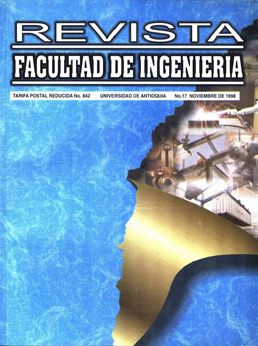LOGSIM: sistema de apoyo al aprendizaje de la programación lógica
DOI:
https://doi.org/10.17533/udea.redin.325808Resumen
En el presente trabajo se describe el sistema LogSim de apoyo al aprendizaje de la programación lógica, el cual se viene utilizando en la carrera de Licenciatura en Ciencias de la Computación en la Universidad Central de Las Villas (UCLV, Cuba). Mediante la simulación del comportamiento del lenguaje Prolog se propicia que los alumnos lleguen a dominar sus mecanismos más importantes. Están disponibles un conjunto de programas ilustrativos que, al mostrar su trayectoria de ejecución, ayudan a entender conceptos tales como los cortes, el "backtracking", el uso de las listas, etc. Adicionalmente este sistema tiende a desarrollar en los estudiantes un correcto estilo de Programación Lógica.Descargas
Citas
LEZCANO, M. Prolog y Sistemas Expertos ( 1995). Ediciones Universidad. Central de Las Villas. Santa Clara, Cuba.
REEVES, T ( 1991 ). Designing CAL To support learning: The case of multimedia in Higher Education Nordic Conference on Computer Aided Higher Education. Helsinki University of Technology, Finland.
RICH, E. y KNIGHT, K. ( 1994). Inteligencia Artificial Segunda edición McGraw-Hill. ROTH, A. (April 1993). The practical application of Prolog. Artificial lntelligence Expert.
ROTH, A. Spencer Clive (1993). The benefits of Prolog. Software Development.
SCHANK, R. and KASS, A. (1996). A Goal-l3ased Scenario for High School Students. Communications of the ACM. Vol. 39 No. 4. DOI: https://doi.org/10.1145/227210.227216
SPENCER, C. (July 1996). LPA-flex 1.2 Technical Product lnformation.
SPENCER C. (1995). The beginning of Prolog. Prime marketing publications LTD.
THOMAS, S. R. (1994). A consideration of some approaches to course organization. AAAI Fall Symposium on lmproving lnstruction of lntroductory Al (IIIA).
WALKER, E. (1994). The use of Computers for teaching Artificial lntelligcnce. AAAI Fall Symposium on lmproving lnstruction of lntroductory Al (IIIA).
Descargas
Publicado
Cómo citar
Número
Sección
Licencia
Los artículos disponibles en la Revista Facultad de Ingeniería, Universidad de Antioquia están bajo la licencia Creative Commons Attribution BY-NC-SA 4.0.
Eres libre de:
Compartir — copiar y redistribuir el material en cualquier medio o formato
Adaptar : remezclar, transformar y construir sobre el material.
Bajo los siguientes términos:
Reconocimiento : debe otorgar el crédito correspondiente , proporcionar un enlace a la licencia e indicar si se realizaron cambios . Puede hacerlo de cualquier manera razonable, pero no de ninguna manera que sugiera que el licenciante lo respalda a usted o su uso.
No comercial : no puede utilizar el material con fines comerciales .
Compartir igual : si remezcla, transforma o construye a partir del material, debe distribuir sus contribuciones bajo la misma licencia que el original.
El material publicado por la revista puede ser distribuido, copiado y exhibido por terceros si se dan los respectivos créditos a la revista, sin ningún costo. No se puede obtener ningún beneficio comercial y las obras derivadas tienen que estar bajo los mismos términos de licencia que el trabajo original.










 Twitter
Twitter